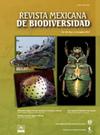墨西哥Michoacán的菊科同生种
IF 0.8
4区 环境科学与生态学
Q4 BIODIVERSITY CONSERVATION
引用次数: 0
摘要
为了研究共生植物(杂草),需要将杂草与非杂草分开,这是一项艰巨的任务,因为自然界中存在梯度。墨西哥植物区系的一个代表性科(Asteraceae)和一个物种非常丰富的州(Michoacán)被用作这项任务和其他分析的模型。根据对标本和书目信息的严格审查以及确定的标准,共列出了357种杂草。此外,部落、生长形式和与其他州的地理相似性被检查地方性、更广泛的本地和引进杂草。在植物标本室标签上缺乏准确的生境信息是区分杂草和非杂草的主要困难。大多数物种既能在受干扰的环境中生长,也能在自然环境中生长。近一半是该国特有的,只有4%被引进。菊科各主要部落的杂草比例比较接近,但外来种主要集中在菊科部落。植物区系相似性主要集中在墨西哥中南部。大多数种是草本植物,不到半一年生植物。我们对共生物种的划分和认识作出了贡献。本文章由计算机程序翻译,如有差异,请以英文原文为准。
Synanthropic species of Asteraceae in Michoacán, Mexico
To study synanthropic plants (weeds), weeds need to be separated from non-weeds, a difficult task due to the existing gradient in nature. A representative family of the Mexican flora (Asteraceae) and a state very rich in species (Michoacán) are used as a model for this task and additional analyses. A total of 357 weeds are listed based on a critical review of specimens and bibliographic information, as well as defined criteria. In addition, tribes, growth forms, and geographic similarities with other states are examined for endemic, more widespread native, and introduced weeds. The main difficulty in differentiating weeds from non-weeds was the lack of accurate habitat information on herbarium labels. Most species grew in both disturbed and natural environments. Nearly half were endemic to the country, with only 4% introduced. The major Asteraceae tribes had relatively similar proportions of weeds, but exotics were concentrated in the tribe Cichorieae. Floristic similarities were mainly towards south-central Mexico. Most species were herbs and less than half annuals. We contribute to the delimitation and understanding of synanthropic species.
求助全文
通过发布文献求助,成功后即可免费获取论文全文。
去求助
来源期刊

Revista Mexicana de Biodiversidad
环境科学-生物多样性保护
CiteScore
1.50
自引率
11.10%
发文量
69
审稿时长
12-24 weeks
期刊介绍:
Revista Mexicana de Biodiversidad appears in 4 issues per year and publishes the products of original scientific research regarding biodiversity of the Americas (systematics, biogeography, ecology and evolution), as well as its conservation and management.
The journal ensures high standards with a system of external peer review, and is included in the list of excellence of journals of the National Council of Science and Technology (CONACyT, Mexico). It is currently included in ASFA, Biological Abstracts, Biological Sciences, Latindex Periódica, RedALyC, Web of Science (Thomson Reuters), SciELO, SCOPUS, and Zoological Records.
 求助内容:
求助内容: 应助结果提醒方式:
应助结果提醒方式:


